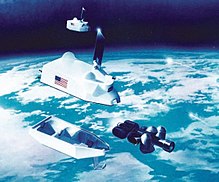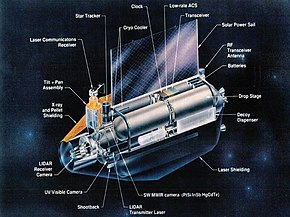Isos wrote:Stupid comparison. Arleigh burkes are there for protecting the carriers.
US real strike plateforms are the f-18, f-35 and all the b-1, b-2 and b-52 and submarines.
It's just a matter of time before they come with their own hypersonic weapons.
A flying plateform like f-18 will add another 800km in range to the missile.
And russian ships are even less protected against such weapons because they rely more on corvettes or light frigates, at least until now. Don't expect the Tor on Udaloy, the 9m96 or the Shtil to intercept mach 7-10 missiles.
Burkes VLS are better suited to carry bigger missiles that have a chance against hypersonic missiles if they somehow design such missile. Russian AD vls are too small for bigger missiles and we can see S-500 missiles are much bigger than s-400 missiles which can't even be carried by russian ships.
The first to shoot will be the first to hit and to win. US have lot of awacs and a carrier based aviation that gives lot of stand off range. They also have submarines that will be able to fire such missiles.
This is true Isos, but the question is the
profitability of naval based aviation armed with hypersonic missiles.
Hypersonic weapons are surely revolutionary offensive means ,that however on average
increase of over an order of magnitude the cost of the single missile.
In the maritime domain, in order
to capitalise the introduction of similar armament on board of the tactical aviation (the unique trasportable on naval units) to obtain some increased stamd-off range of delivery,
you need to concentrate both those very high cost ammunitions, modified
tactical aircraft of enormous cost ,at example F/A-18 and F-35 B/C purposely modified for delivery of miniaturized hypersonic missiles,
on board of a single ships of immense high cost - aircraft carriers or helicopter carriers -, this render the aircraft carrier an even more paying target the loss of a which ,even only one, can mean the distruption of 3-4 years of national investements and production capabilities in shipyard output, naval weapons and naval aviation equipment.
The
other big problem reside in the nature of target tracking, discrimination and designation in the era of naval mounted hypersonic missiles with range of 1000-1200 or at brief more than 1500 km:
- The
primary target tracking and designation mean for targets at similar or greater range are
constellation of space based systems.
- The
primary mean of discovery and discrimination of surface units for those space based systems are satellite-mounted radar arrays and IR/optical sensors, while the
secondary ones are satellite based ELINT systems collecting and crossing selected emission data
- The
ships that forcefully must host naval aviation at sea -flat-top dozen million tonnage ships- are today
2 or 3 orders of magnitude more easy to track and designate from space-based radar arrays (cause just theirs enormous flat-top area) space based
IR sensors (cause the cyclical take-off, with ample use of afterburning of F/A-18, F-35 and E-2 and landing with enormous amount of dispersed thermal friction at the arrest)
and space based ELINT sensors (cause the necessary emissions for aircraft control and from E-2 radars )
in comparison to purposely developed low-observables ,low-emissions, low-tonnage and dispersed surface ships of corvette and frigate class.This mean that
one or more low observable frigates/corvettes will be capable to independently receive exact position and updates about a big flat-top units and theirs aircraft operation and come within engagement range of theirs weapons
much before those ships could receive the same information from theirs space-based echelon.Us Navy are perfectly aware of that ,in facts theirs
reorientation toward big scale war against peer enemies envisioned the urgent introduction of "distributed lethality" concept, exactly responding to the problems highlighted, now terribly worsened by completion of tests and near introduction of hypersonic missiles by part of Federation Navy.


 ALAMO
ALAMO



